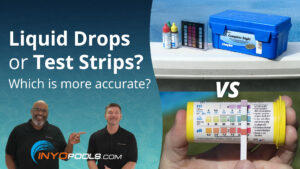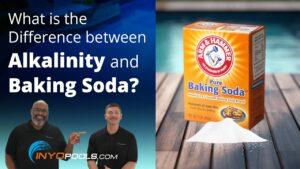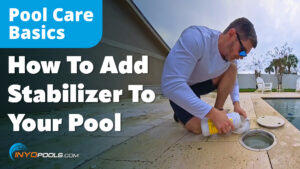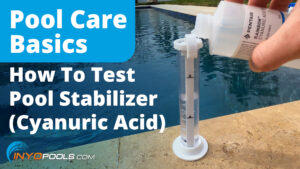This video shows how to lower your swimming pool’s pH level to the acceptable range of 7.2 – 7.8. We prefer to use Acid Magic, a safer solution that prevents burns to the skin.
Why is a High pH Level Bad?
- Scale Build-up – Calcium deposits called scale with build-up on your pool walls, tile line, andin your pool equipment like your salt chlorinator cell.
- Inhibits Chlorine – Chlorine becomes less effective in a high pH environment.
What Are We Using to Lower the PH Level?
- Muriatic Acid – More specifically, we are using a product called Acid Magic; formulated with buffering agents to prevent chemicals burns and 90% less fumes than traditonal muriatic acid. The most common form of muriatic acid is refered to as “dry acid”; this comes in powder form, and required protective goggles and gloves to handle safely.
How to Lower Your PH Level
- Test Your Water’s PH and Alkalinity Levels. Alkalinity affects your ability to adjust the water’s pH level. For example, an alkalinity level over 120ppm will require more muriatic acid to lower the pH level into the ideal range of 7.2 – 7.8 The desired range for a swimming pool’s alkalinity is 80 – 120ppm.
- Calculate the Required Amount of Muriatic Acid – Use a pool water chemistry calculator to determine how muriatic acid is needed to adjust your pH Level. Use Inyo’s all-in-one My Pool Dashboard for all your pool chemical dosage calculations.
- Mix Muriatic Acid Solution in Bucket (10:1 Water to Acid Ratio) – For our preferred method for adding muriatic acid to your pool, we first mix together a solution of acid and water in a bucket. Make sure to use a clean bucket; muriatic acid can be hazardous when mixed with undiluted chlorine. If you’re handling dry acid, by sure to wear protective goggles and gloves.
- Pour Muriatic Solution in Pool – Walk the length of your pool, pouring in the muriatic acid solution. We suggest pouring the bucket out in front of your return lines while the pump is running to ensure it is thoroughly mixed with your pool water.
Do you have any topics you’d like covered in our Pool Care Basics series? If so, feel free to leave a comment down below with any questions you’d like answered.













Leave a Reply